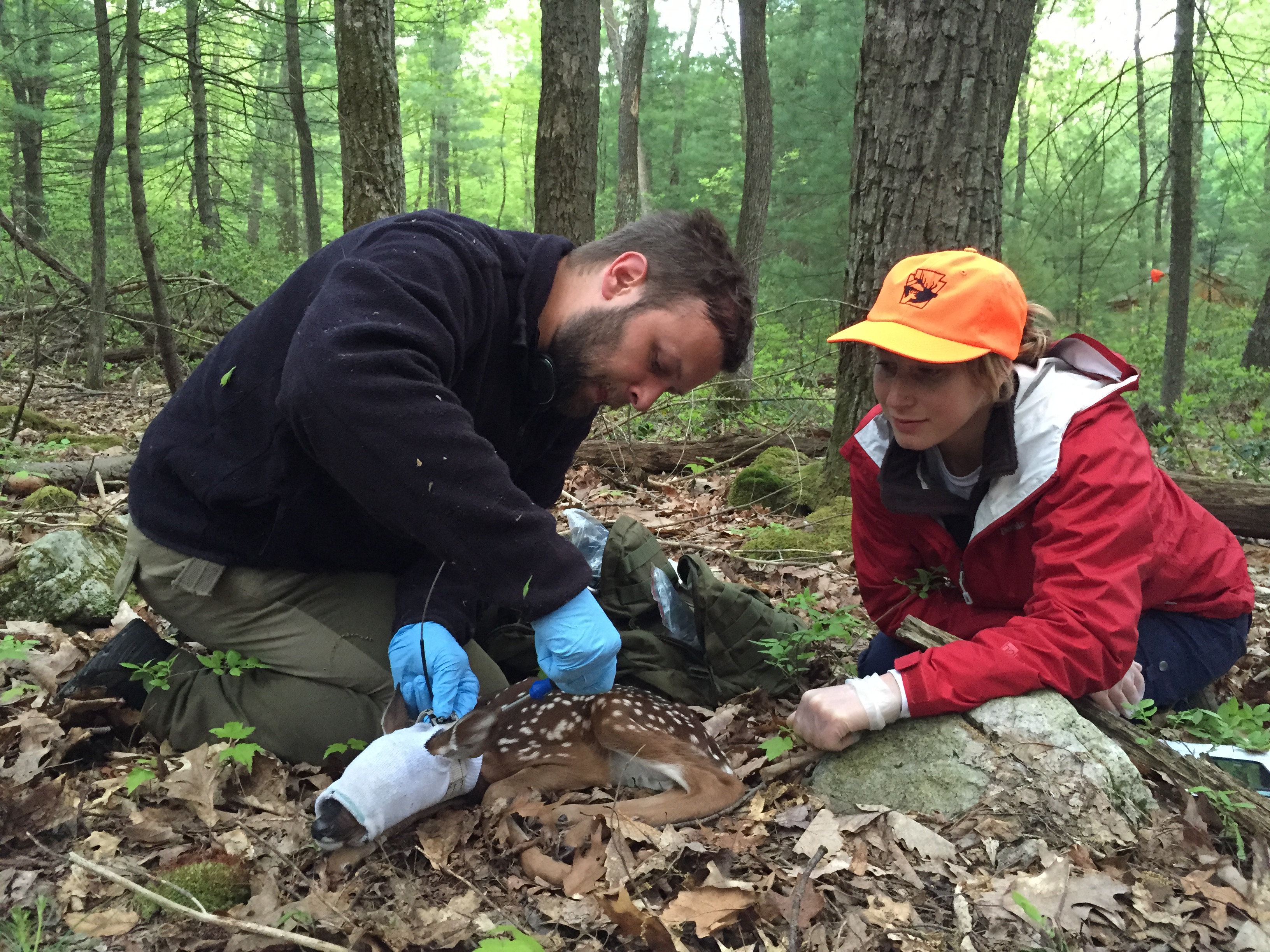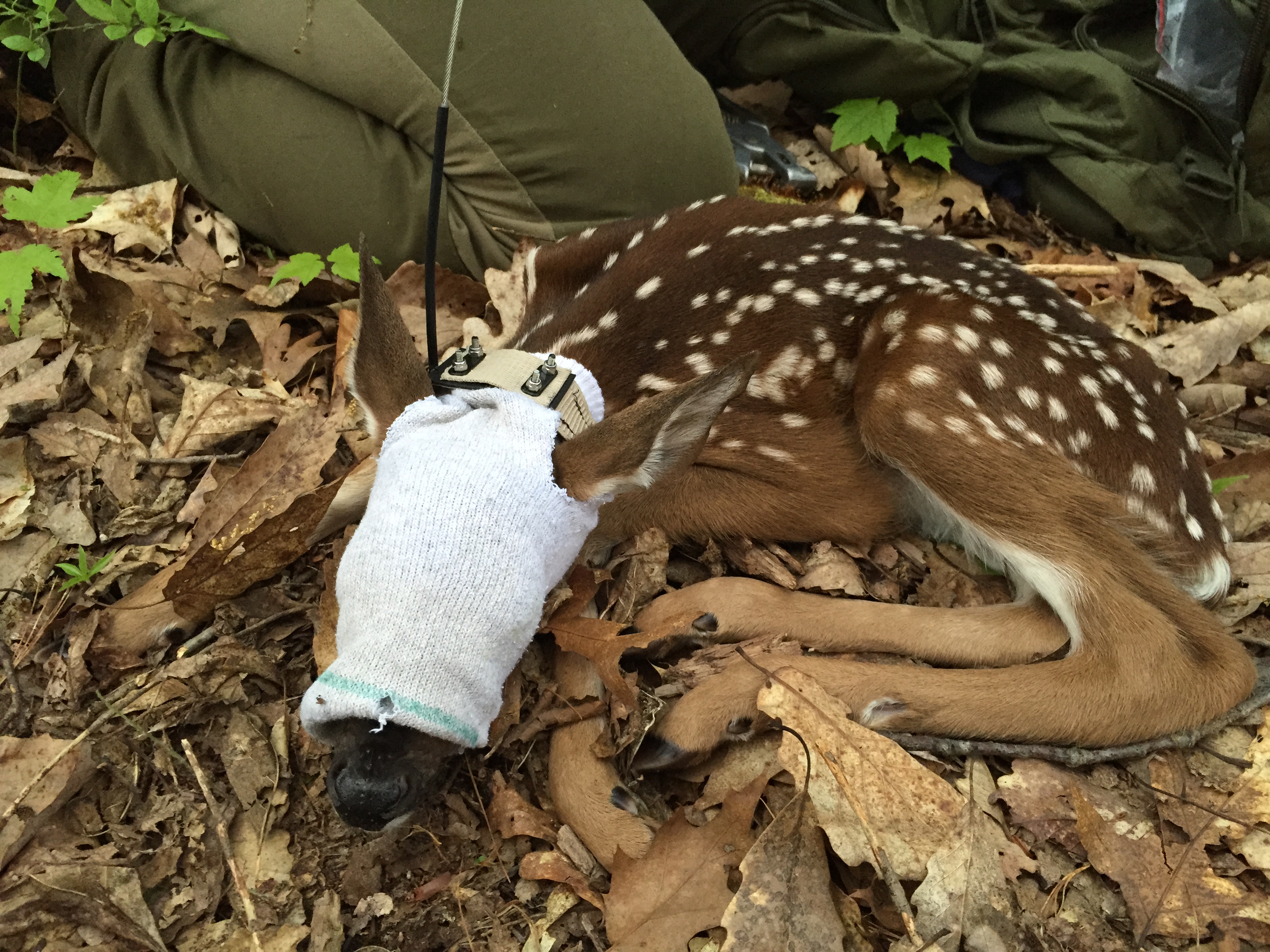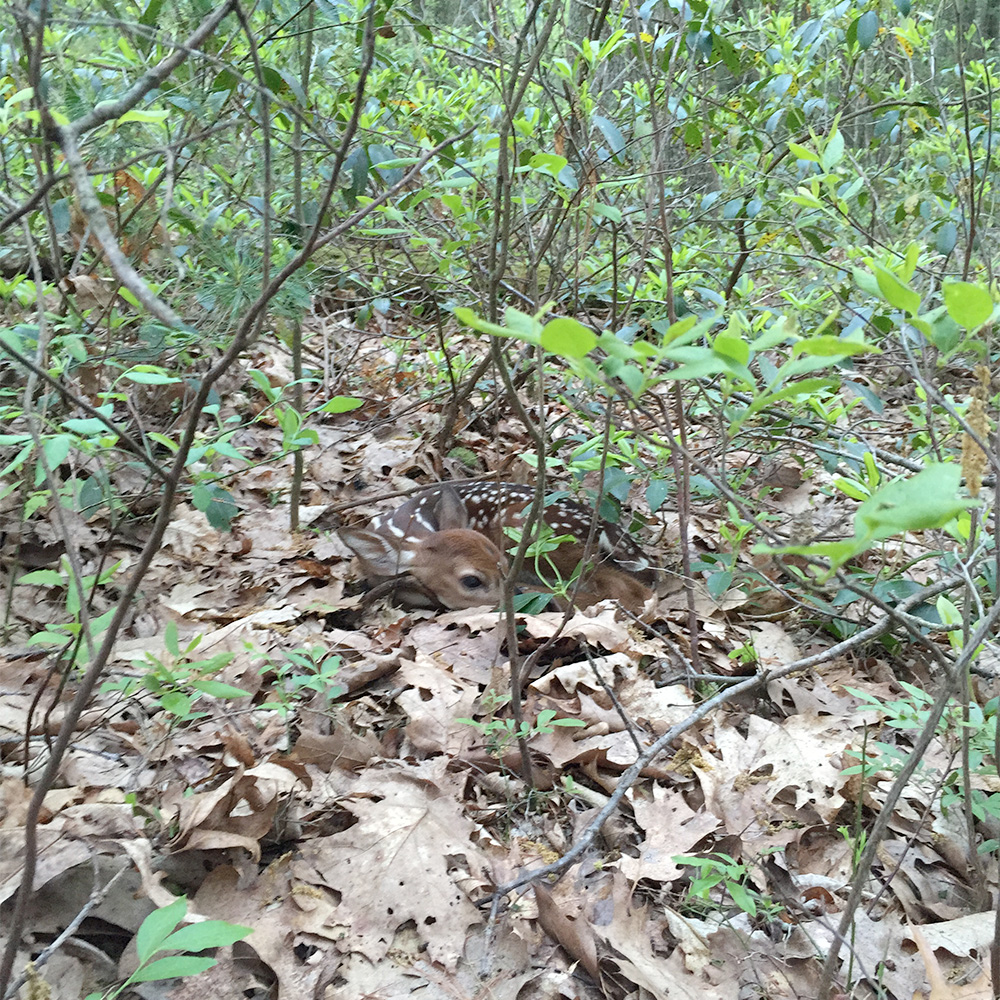Friday evening at 8:19 pm I received an email with the subject line ***Vaginal Implant Event ***.
My first reaction was “Uh-oh, here we go” because this email meant that a vaginal implant transmitter, or VIT, was laying on the ground somewhere and probably with a fawn (or fawns)! At least it happened after we had our crew in place, although they only started work on Monday.
This past winter we captured a number of adult females that received a satellite GPS collar and a VIT. The collar checks the signal from the VIT every hour and if the VIT responds it knows everything is ok. However, if the signal is lost or the temperature drops below normal body temperature the collar sends a signal to the satellite that something is amiss. Hence, the email I received.
Although late on a Friday, the timing of the birth was actually in our favor. We have to give the mother and fawn 6-10 hours to bond before we go in and try to capture the fawn(s). That meant looking for the fawn at first light on Saturday morning would be perfect.
After checking the collar ID we determined that the doe was on the Rothrock State Forest. The crew leader for the southern study area, Matt Adams, made plans for the next day with the other field techs.
The crew found the VIT at 0615 about 25 yards from a camp. Sounds easy enough, except the fawn was only 7 yards from the VIT but it took the crew 23 minutes to find it!
The fawns was on the edge of a thicket of mountain laurel, 100 yards from a forest road and 32 yards from a camp.
The crew was able to blindfold, weigh, ear tag, and fit with a small transmitter (that will communicate with the doe’s collar) all in under 15 minutes. And although the fawn tried to escape a couple of times, Matt said “Overall the handling [of the fawn] went really well.”

Unfortunately, the crew was not able to confirm whether the doe was nearby because the VHF signal (that you can detect with a handheld receiver) only transmits from 0700-1700 hours each day (the satellite signal however transmits every hour).

So what are the odds of this little beauty surviving to its first birthday? About 50:50. And we’ll let you know how the first fawn of the study fares.
-Duane Diefenbach
